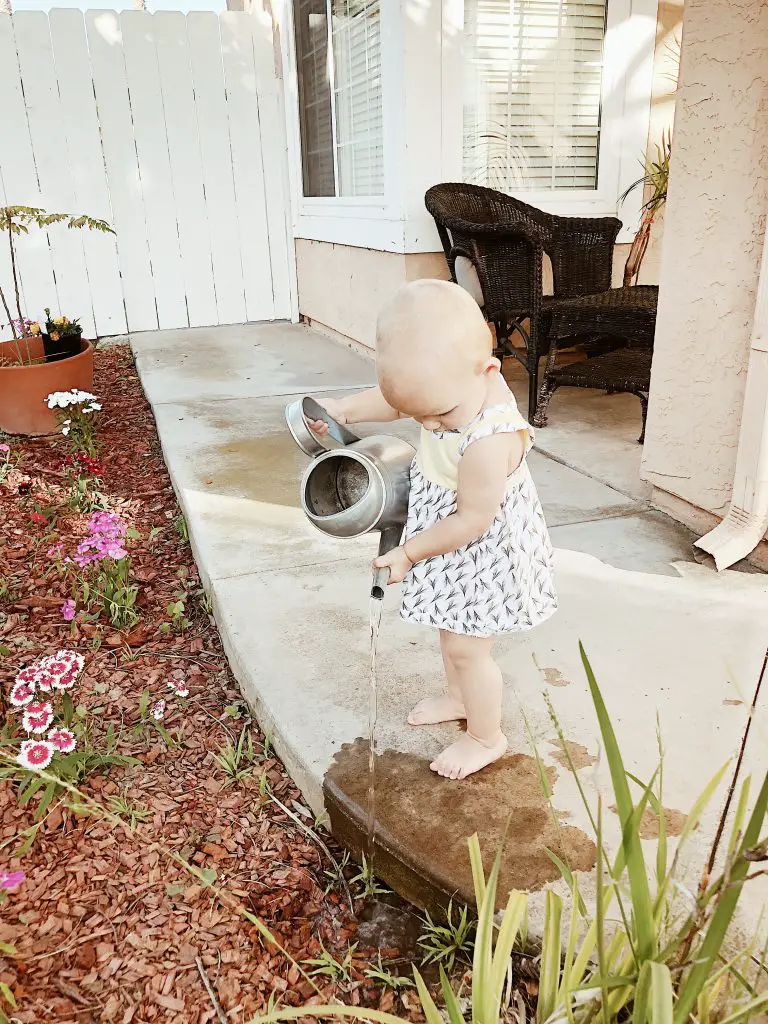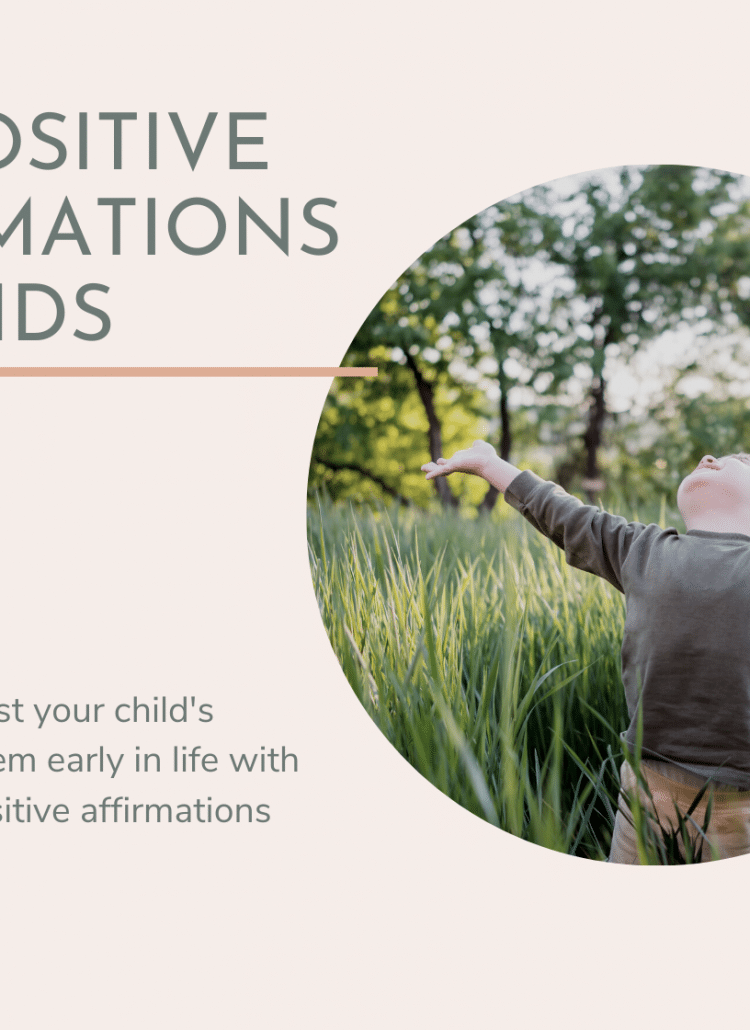As much as I love my daughter, some days I really look forward to bedtime! Chasing a crazy toddler around all day is exhausting and sometimes all we parents need is a little rest, relaxation, and quiet.
Unfortunately, most of the time our crazy toddlers have different plans. Plans to stay up as late as possible and drive us to insanity. That may seem a bit dramatic, but if you have a toddler you know that I am not exaggerating at all.
Getting your toddler to easily go to sleep at night is an art form. It takes careful planning, diligence, commitment, and consistency. But if you can master the art of toddler bedtime, you will forever be changed.
In this post, I will cover the 12 things that can help you get your crazy toddler to sleep at night. Most of them I have personally tested and know to be effective. I also did tons of research and these 12 things are the most suggested ways to help get your toddler to sleep. So you can rest easy, no pun intended, knowing these tips tend to work universally and not just for me.
Important Note
I just want to say that, as it is with all things parenting-related, every family is different and every child is different. What helps my toddler might not help your toddler. That means while these tips might give you some good ideas is up to you to find what works best for your family and stick to it.
For example, my daughter likes to fall asleep watching music videos. Is that the healthiest option? Probably not. Will it work for every child? Nope. Does it work for me and my daughter? Heck yeah!
Try lots of different tips and tricks. Dump the ones that don’t work for your toddler and hang on for dear life to the ones that do!
How to Get a Toddler to Sleep?
1. Wake up and go to bed early while respecting your toddler’s internal clock
One of the most important things you can do to establish an effective bedtime routine is to wake up early and go to bed early. When your toddler wakes up early it shifts their entire schedule up. Earlier wake-up time means earlier naps and as a result, you get earlier bedtimes.
However, you need to respect your toddler’s internal clock. Trying to make them go to sleep when their body is just not ready will only end in frustration for both you and your toddler.
It is generally recommended that toddlers get between 11 to 14 hours of sleep per night. Keep that in mind when deciding when to put your toddler to bed and when you want them to wake up. For example, I would like if my daughter woke up around 7 am every morning. That means she needs to be sleeping by 8 pm every night at the latest in order for her to get the recommended minimum of 11 hours of sleep per night.
Once you figure out what hours work best for your lifestyle, then you can see if that matches up close enough to your toddler’s internal clock and natural sleep patterns.
Of course, the more consistently you follow a schedule the more your toddler’s internal clock will follow suit. That might mean a bit of an adjustment period, but eventually, their body should get used to the sleep and wake times you set. I am starting to implement an earlier bedtime for Lily so she will wake up earlier in the mornings. And let me tell you…it’s definitely an adjustment!
2. Tire them out during the day and get outside!
This is probably the biggest indicator of whether or not my daughter will fall asleep easily. If we are sedentary and cooped up inside for most of the day she will fight bedtime. If we spend a lot of time running around outside throughout the day, then she will pretty much conk out on her own without any effort on my behalf.
According to research:
“Outdoor time improves a child’s sleep in three critical ways. Natural light from the sun regulates the body’s internal ‘sleep clock’, which makes children more alert during the day, and tired at night. Additionally, it has a calming effect that helps children cope and release built-up tension from stressful or scary events. Research also suggests that children play harder and release more endorphins when allowed to play in an outdoor setting vs. an indoor setting.” (source)
Basically, getting outside is essential for your toddler’s sleep patterns and overall health. So get outside, shed that energy, and soak up the vitamin D!

3. Don’t allow late afternoon naps
I have heard this tip a million times and I bet you have too or experienced it first hand! The reason for that is that it’s so very true! You cannot let your toddler take a late afternoon nap or they will not be tired enough when bedtime rolls around.
I have to say sometimes this requires serious willpower on the parent’s behalf. Denying your child a nap IS SO HARD. First of all, naps mean rest periods for us parents. Very hard to turn down. Secondly, not letting your toddler fall asleep means they will probably be super cranky and not very happy campers.
This basically means you have to be very diligent in making sure your toddler takes a nap at the correct time. This will ensure they don’t ruin their bedtime or skip a nap and get overtired, which can sometimes be even worse than a late nap!
4. Create a routine and be consistent
Creating a bedtime routine will help your child wind down for the night by teaching them that certain activities lead to going to sleep.
First, you need to make sure that you start your bedtime routine at the same time every night. There will definitely be times when you have to start your routine earlier or later because let’s be honest that’s life. However, do try to be as consistent with bedtimes as you possibly can.
Next, create a sequence of events that leads to going to sleep. This will be different for every family. These things can include brushing teeth, reading books, singing songs, taking a bath, etc.
What you exactly do with your toddler is not quite as important as making sure you stay consistent and do the same thing every night. For example, this is Lily’s bedtime routine: Brush teeth, get pajamas on, give everyone goodnight kisses, help me get the bed ready, watch a movie or music video ( I know this is “controversial” but it really helps her get relaxed), cuddle mama while she falls asleep (Usually less than 10 minutes in the movie or music videos). Sometimes we start her routine with a dance party if I think she has some extra energy to burn.
Once again, what you do isn’t as important as always doing the same thing. They need those cues and signals that bedtime is coming.
5. Take an Epsom salt bath
As I was doing research for this post, I came across some information regarding Epsom salt baths for toddlers. Apparently, because Epsom salt contains magnesium, which is a muscle relaxant, giving your toddler an Epsom salt bath before bed can help their body get into a more relaxed state.
If you already give your toddler a bath at night as a part of their bedtime routine, think about adding a small amount of Epsom salt to help calm them. I don’t usually give my daughter a bath at night unless she needs it (she showers with me every morning). After reading this though, I’m thinking about giving it a try. She loves taking baths, so getting the added benefits of Epsom salt would be a bonus!

6. Make the room dark
One of the things that help your toddler sleep is the release of a naturally occurring hormone called melatonin. Essentially, melatonin tells the body it’s time for rest and gets released when the body is in the dark. in order for your toddler’s body to know it’s time to sleep, they need to be in the darkness. This means no technological devices, lamps, or night lights.
If your toddler is afraid of the dark and needs a night light then there are two alternatives. You can either get a night light with a red light or you can use a Himalayan salt lamp. Both of which are softer less intense light sources. Still, it’s recommended that you turn off any night lights after your child falls asleep so they don’t wake up in the middle of the night.
7. Give them sleep items
One of the things that can help create consistency and comfort is giving your children sleep items. Blanket, stuffed animal, pacifier, etc. Ever since my daughter was around 5 months old, right before I put her down for a nap I would let her hold her bunny and use her pacifier. Later on down the line, she added her blanket into the mix. Now when she wants to sleep she grabs those items and I know it’s time for bed.
Having sleep items is just adding one more layer to their bedtime routine. By consistently getting to have their favorite stuffed animal or blanket when they sleep they start associating it with bedtime.

8. Feed them
No matter what, a toddler will not go to sleep if they are hungry. If they do go to sleep hungry the chances of them waking in the middle of the night to eat are a lot higher. Giving your toddler a healthy snack or nursing them before bed means their grumbling tummy won’t keep them awake.
According to scientists, the composition of breastmilk changes throughout the day according to what your child will need. This means that the milk your child eats right before bed is composed of everything they need for nighttime and has calming effects. Nursing your toddler right before bed helps them relax as well as keep their tummies full.
If you no longer breastfeed your toddler, that’s okay too! You can always give them a bottle or a healthy snack! The goal is to get their little tummies full so they can sleep soundly.
9. Use essentials oils
Toddler-safe essential oils can be incredible for luring your toddler to sleep. There have actually been many scientific studies to back up the claim that essential oils, in fact, help with sleep.
There are three ways you can use them:
- Pillow Spray – The first way you can incorporate essential oils into your toddler’s bedtime routine is to use a pillow spray. All you have to do is put your essential oil blend, some witch hazel, and some water into a small spray bottle and lightly spritz your toddler’s pillows before they go to sleep.
- Diffuser – Another way you can use essential oils to help your toddler sleep at night is through a diffuser. Because of the way diffusers work, the essential oils are in a more diluted state. This is great for toddlers because it’s gentle enough for them while still being effective.
- Roller – The third way you can use essentials oils as a part of your toddler’s bedtime routine is to apply them directly to your toddler’s skin using a roller. If you use this method, make sure you dilute the essential oils using a carrier oil (almond, coconut, Jojoba) to ensure it’s not too strong for your toddler’s skin to handle.
- Bath Time – The final way you can incorporate essential oils to help your toddler sleep at night is to put them in the bath. However, you need to remember that you can’t just put a few drops of oil in the bath and call it diluted. The best way to dilute essential oils for the bath is to mix them with a carrier oil and then add that to some bubble bath, preferably an all-natural bubble bath. Also, oils can make the bath extra slippery, please be cautious when you bathe your children!
Please do your research when it comes to which essential oils are safe to use on toddlers. However, Lavender, Chamomile, Sweet Orange, Clary sage, and Cedarwood are generally accepted as safe to use on toddlers when correctly diluted. Also, make sure the oils you use are therapeutic grade. Some oils contain icky chemicals that you don’t want to expose your toddler to.

10. Lay down with them
Depending on which book or article you read, this may or may not be a recommended method for getting your toddler to sleep at night. However, coming from someone who practices “attachment parenting” I think this is a perfectly respectable way to get your toddler to go to sleep at night.
Lying with your toddler as they fall asleep gives them a sense of comfort and allows them to relax. You might be worried this will make your toddler codependent and unable to self-soothe, but it won’t. Studies show that the more your children are attached to you, the more independent they become.
Getting your toddler to sleep could be as simple as lying down with them and having a good cuddle sesh! If you want to read a great article supporting the argument about lying down with your kids, read it here.
11. Be stern and offer acceptable solutions
Another very important aspect of getting your crazy toddler to sleep at night is not giving in to their protests! You have to be stern and, if necessary, offer options.
Sometimes, even when I feel like I’ve done everything right, my daughter outright refuses to sleep. I don’t want to start a war and yell, “You have to go to sleep child!” which is usually what I want to do. But I need to stand my ground, not give in to her distractions, and keep calmly drilling home the point: It’s bedtime!
Make sure your toddler knows they need to go to sleep and it’s not time to play games. You might think your younger toddler doesn’t understand, but trust me, they do. Every time Lily starts trying to play around at bedtime, I have to keep repeating, “We will play in the morning. Right now it’s bedtime. You need to go to sleep.”
Another option is to offer options. Toddlers like to feel like they are in control. One way to let them take the reigns is to offer two options that you would be happy with either way. That way they think they are in control when they’re really not.
For instance, when my daughter is fighting bedtime I’ll say something like, “Do you want me to put a movie on? Or do you want me to stand up and rock you?” She’ll either point to the TV or crawl on top of me. She made the choice, but I was fine with either option.
12. Stay calm
There was a period time a few months ago when Lily refused to sleep. After a long week of chasing her around, I really needed my rest and she was making it impossible. As much as I hate to admit it, I lost my temper and got frustrated one too many times.
After a while, I realized that my being stressed and frustrated only made the situation worse. Children are very intuitive and they know when you’re feeling anxious, which makes them anxious as a result. Being stressed and anxious is not conducive to a relaxing sleep environment.
After I learned to stay calm and look for solutions instead of getting frustrated and annoyed, our sleep situation improved. Did being calm magically make her go to sleep? Nope. It did, however, assure that I wasn’t making the situation any worse or unnecessarily stressful for me or Lily.
Bonus options to get your toddler to sleep:
Bonus 1: Give them bananas!
According to Forbes, potassium and magnesium are natural muscle relaxants, and bananas are a good source of both. They also contain the amino acid L-tryptophan, which gets converted to 5-HTP in the brain. The 5-HTP, in turn, is converted to serotonin (a relaxing neurotransmitter) and melatonin.
Bonus 2: Access diet
Take a look at your toddler’s diet. Could they be consuming too much caffeine or sugar throughout the day? Do they have a food intolerance that’s causing gas or discomfort? If you feel like you’re doing everything right but your toddler still won’t sleep, ask yourself some questions, do some research, take them to the doctor, etc. Figure out if it could be their diet that’s to blame! (If you are breastfeeding still, make sure you access your diet as well.)
Bonus 3: Use acupressure
Try massaging the space above the bridge of your toddler’s nose between your eyes. Turns out this acupressure point can induce sleep. I’ve tried it on Lily and she hates it. But maybe your toddler will love it! It’s worth a try.
Comment below if you’ve tried any of my suggestions and tell me if they worked!






The points in this article is actually great. This would be a big help for those who are having a hard time having their toddlers sleep.